Abstract
1. A double sucrose-gap voltage-clamp technique has been used to study the effects of acetylcholine on the membrane currents in atrial trabeculae of the bullfrog, Rana catesbeiana. 2. The second, or slow inward (Ca2+/Na+) current, was found to be markedly reduced by concentrations of acetylcholine greater than approximately 2-0 X 10(-8)M. The resulting decrease in net calcium entry provides a straightforward explanation for the negative inotropic action of acetylcholine in atrial muscle. 3. Measurements of membrane resistance near the resting potential showed that relatively high doses of acetylcholine (approximately 10(-7) M) decrease membrane resistance by about twofold. This effect is shown to be the result of an increase in a time-independent background current which appears to be carried mainly by potassium ions. 4. Using appropriate pharmacological techniques, it has been possible to demonstrate: (i) that the peak slow inward current is reduced to about half its initial value before any significant increase in background current occurs; (ii) that even when a sufficient dose of acetylcholine to produce an increase in background current is used, the background current shows inward-going rectification and cannot account for the observed reduction in the slow inward current. 5. No consistent change was observed in the degree of activation of the time-dependent outward membrane currents after application of concentrations of acetylcholine which produced large decreases in the peak slow inward current. 6. These results are discussed in relation to previous electro-physiological and radioisotope studies of the mechanism of the negative inotropic effect of acetylcholine in cardiac muscle.
Full text
PDF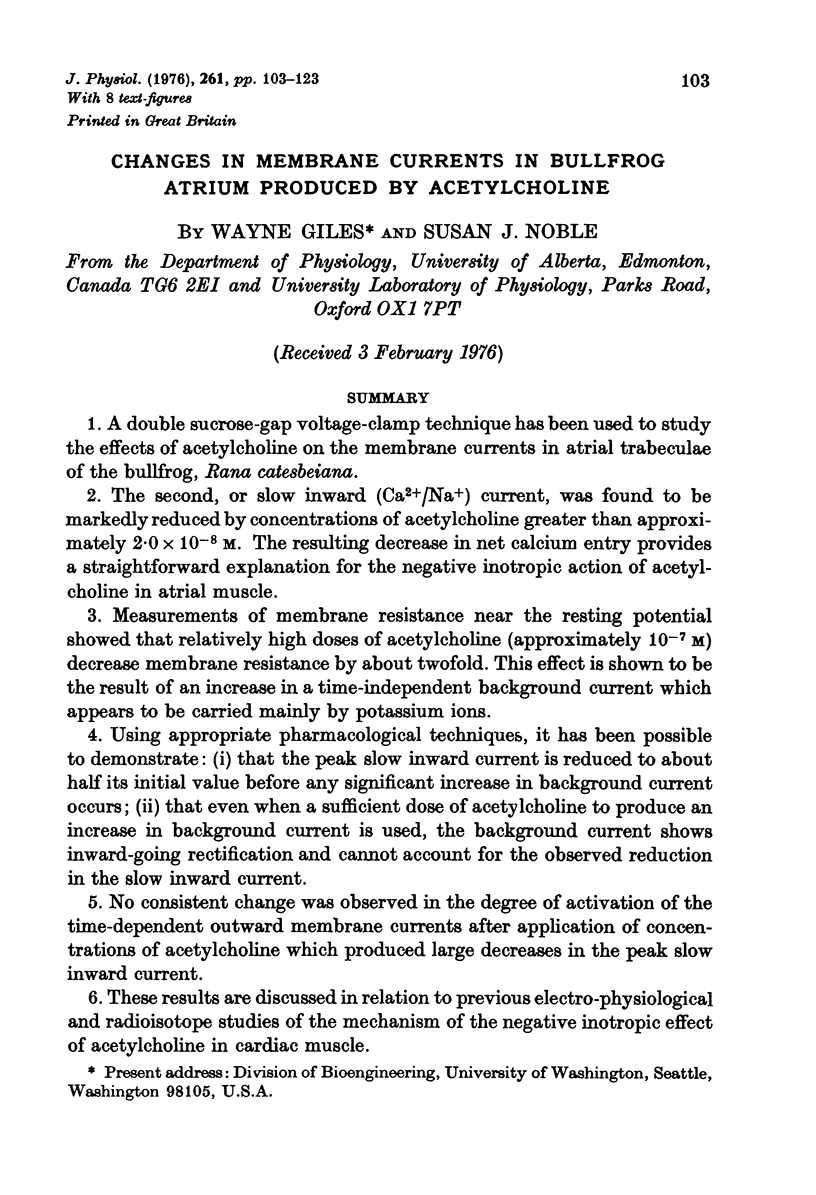
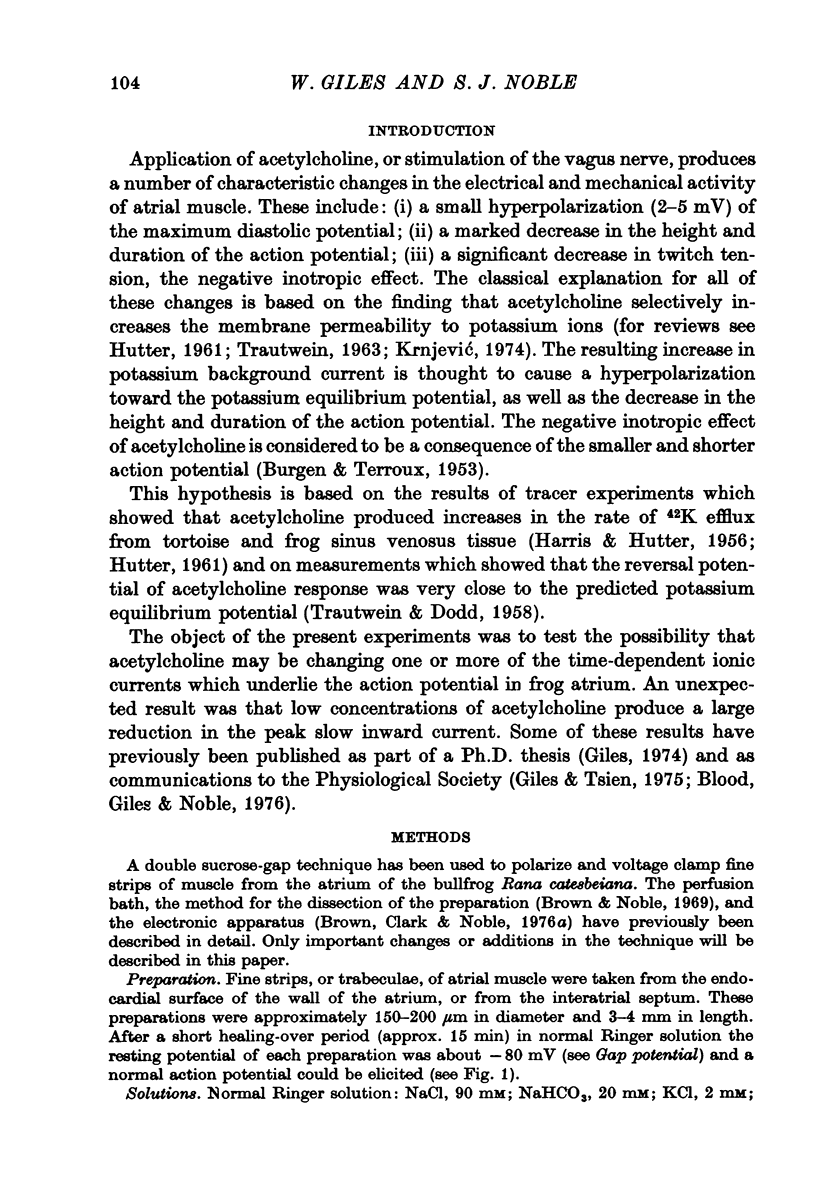
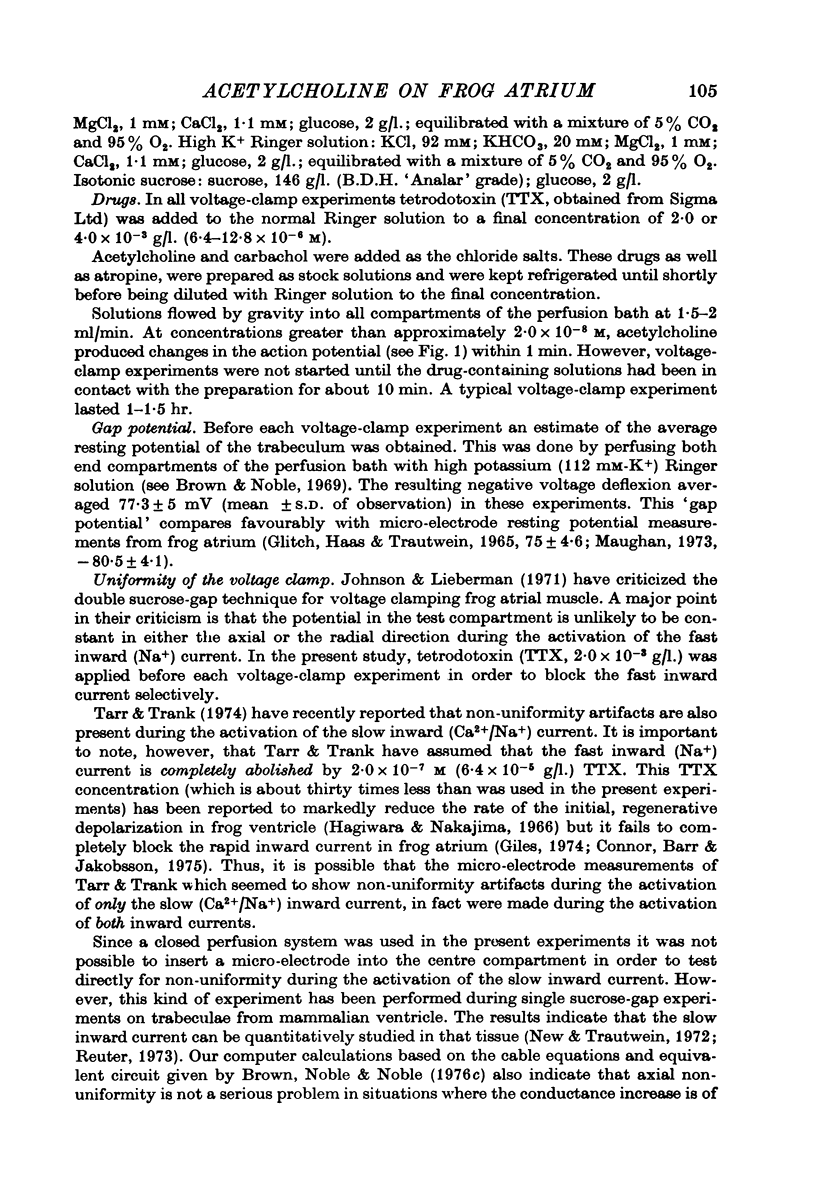
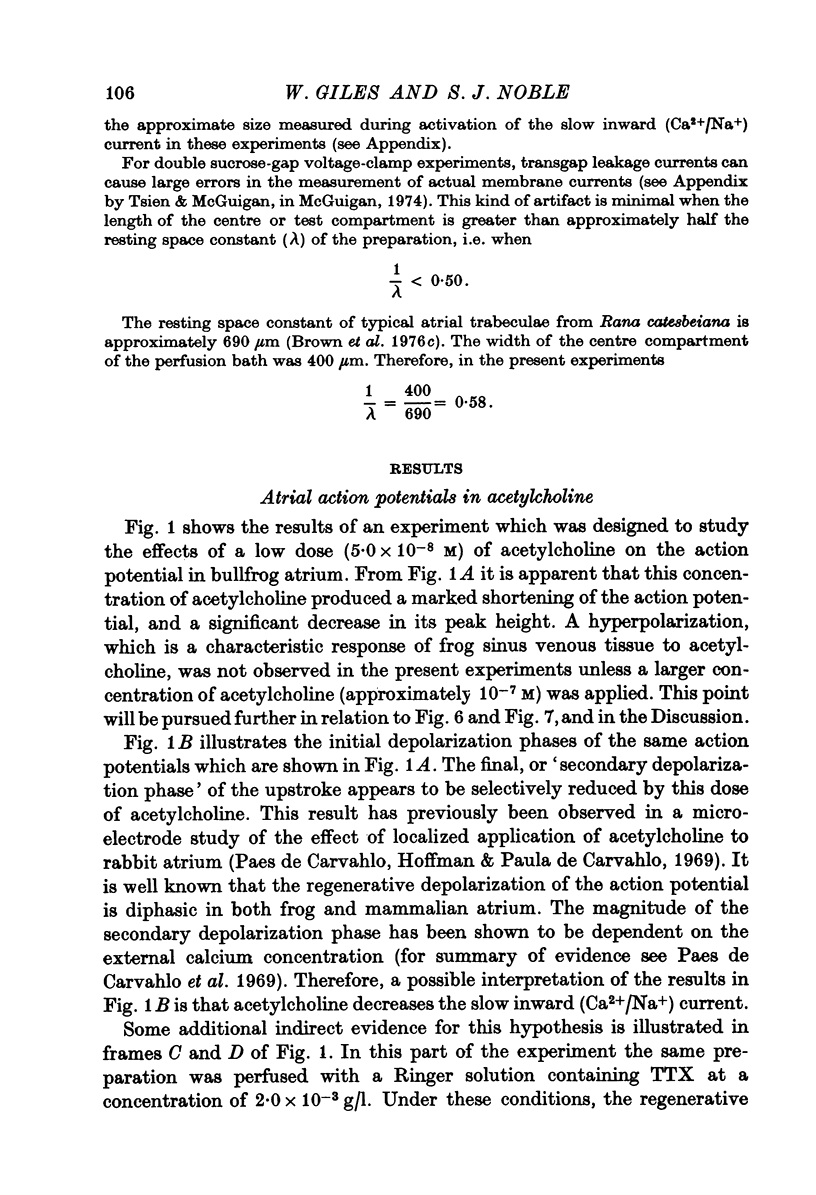
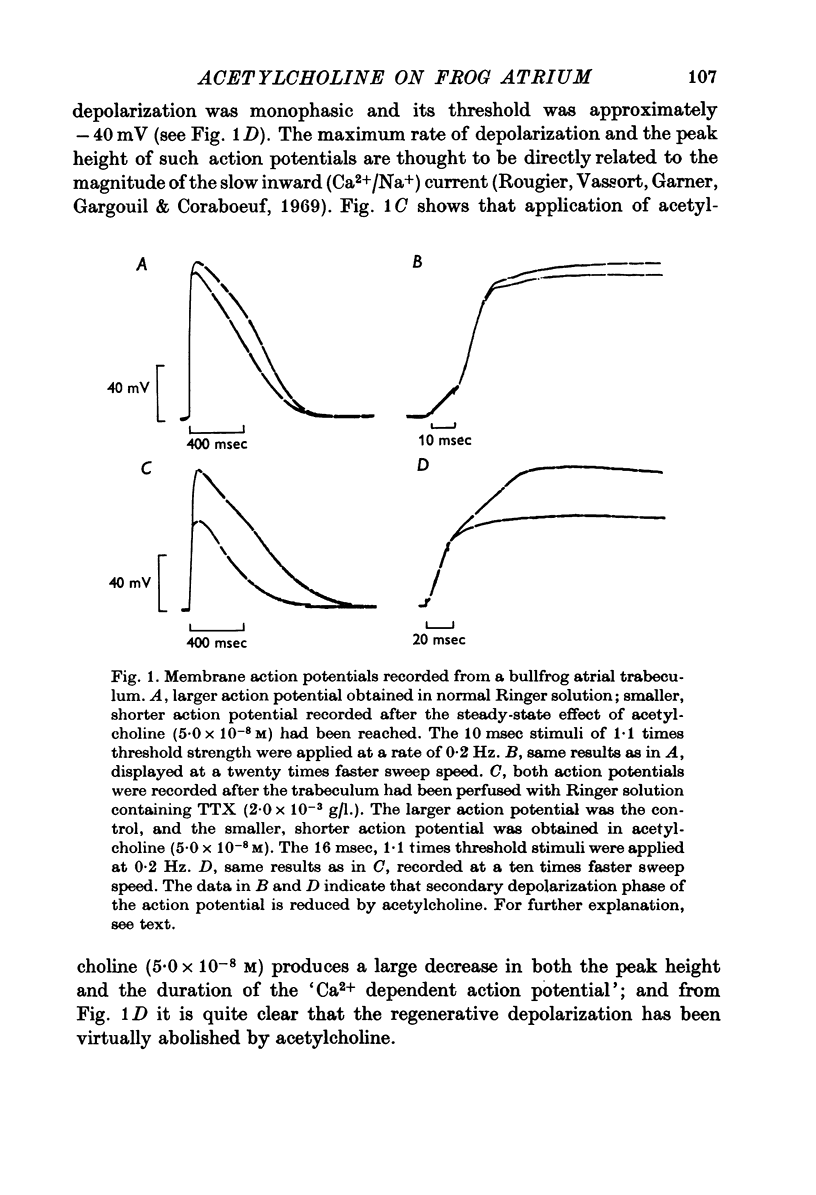
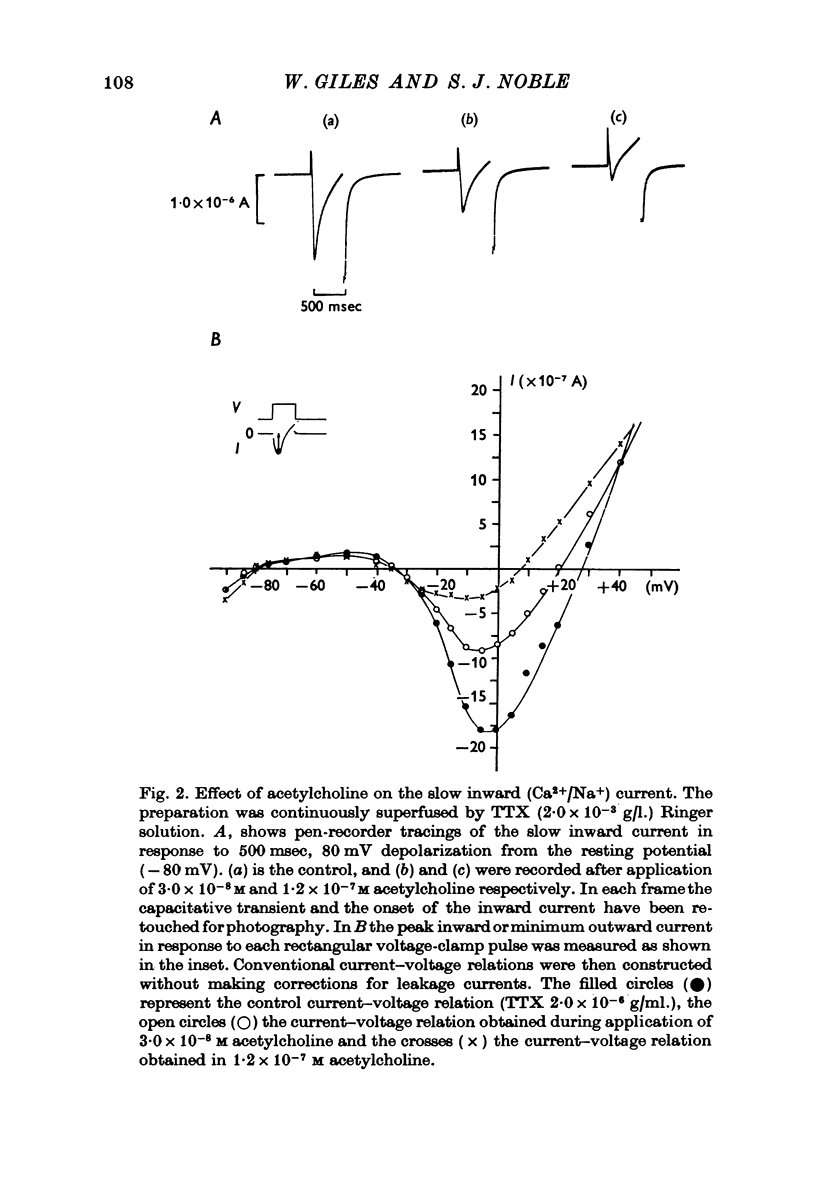
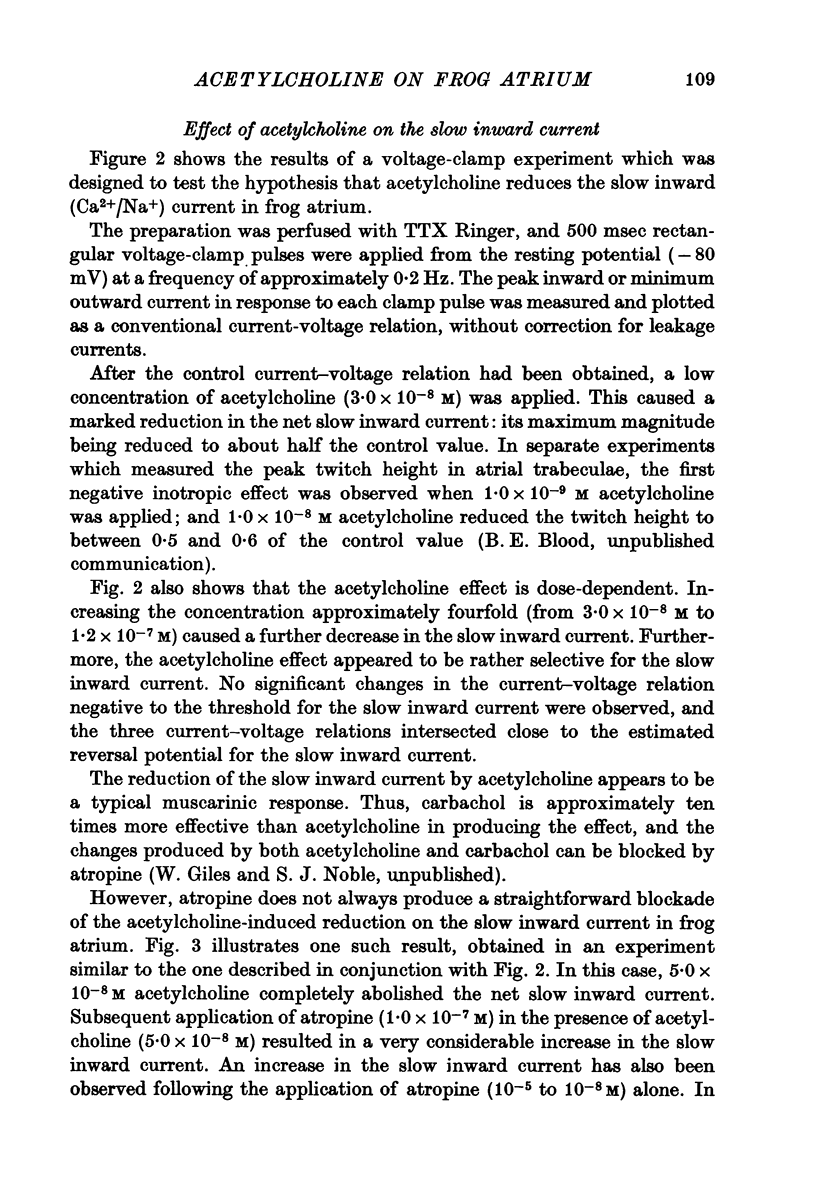
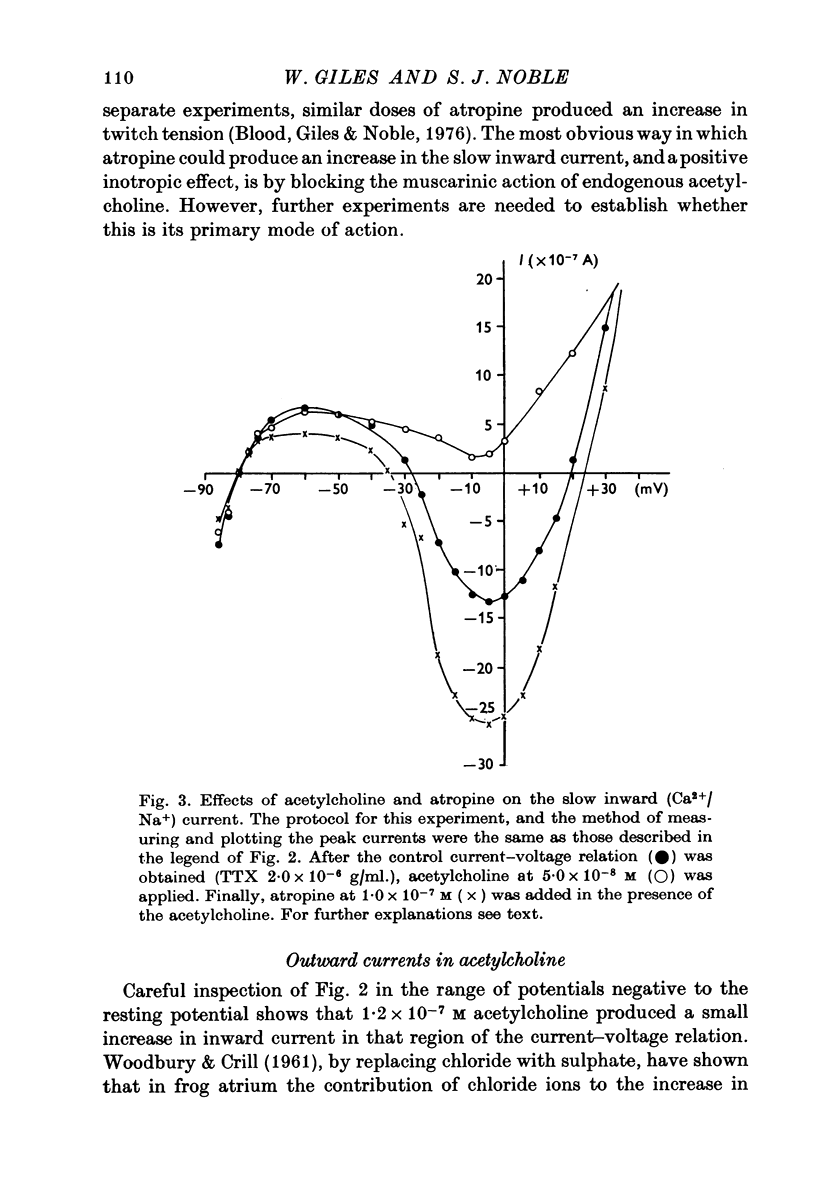
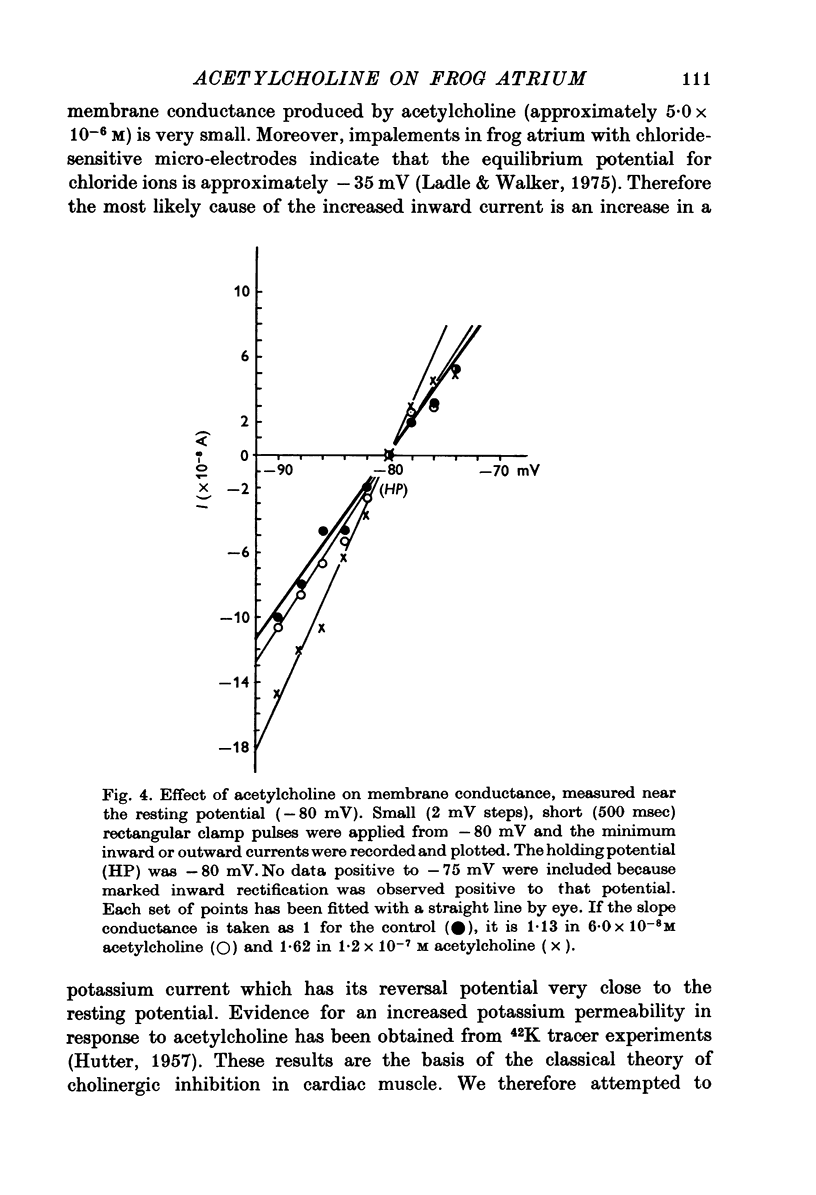
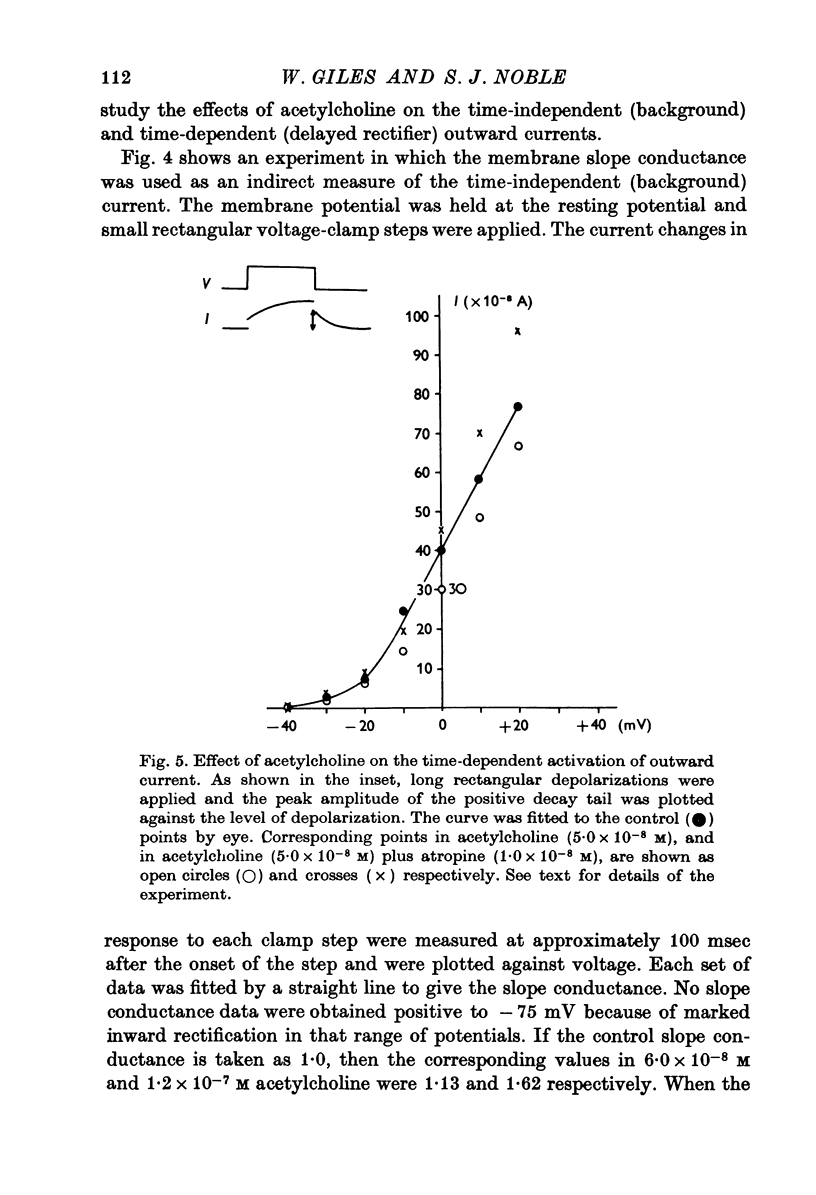
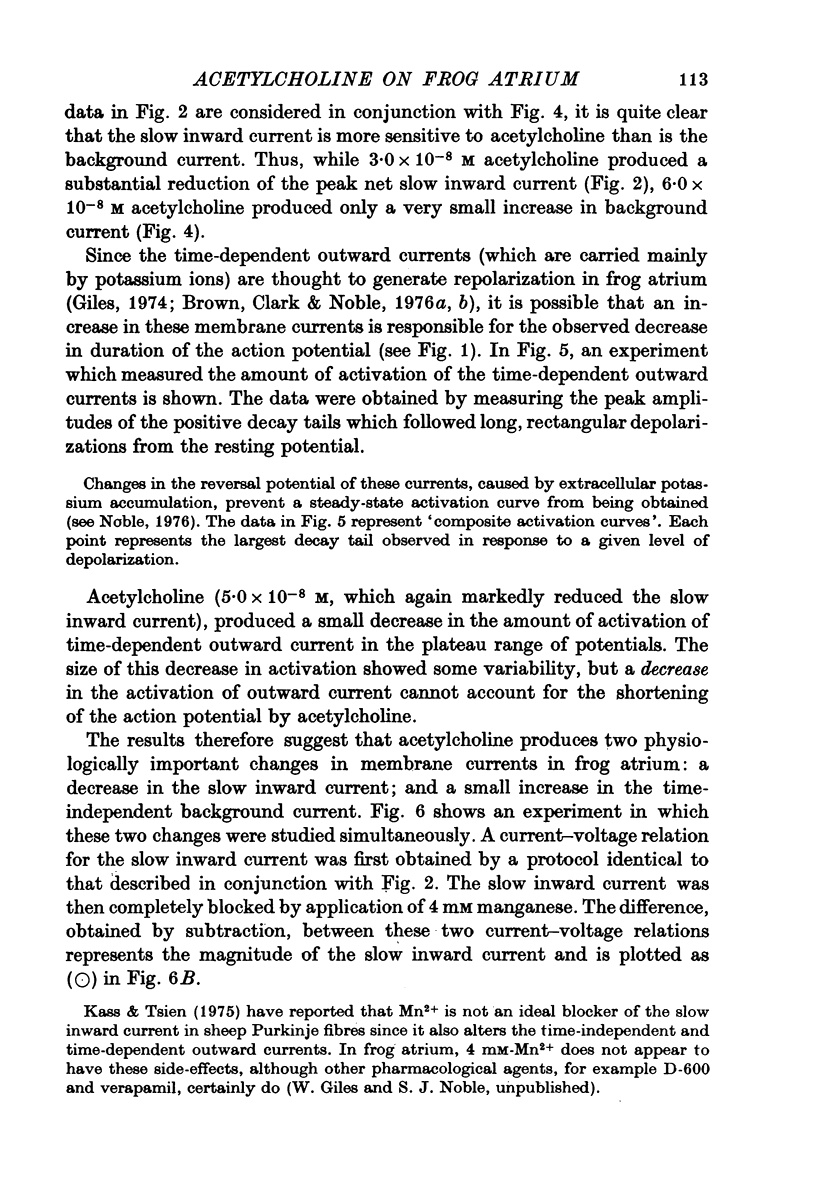
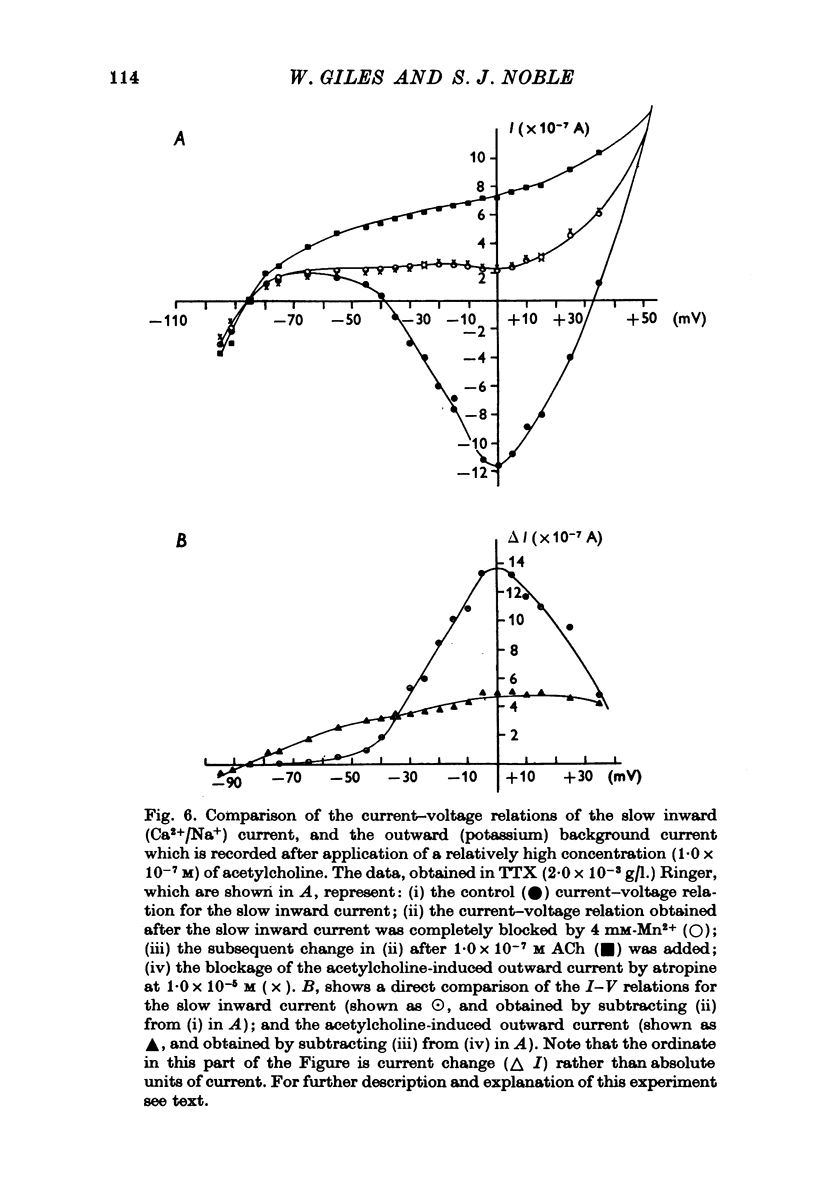
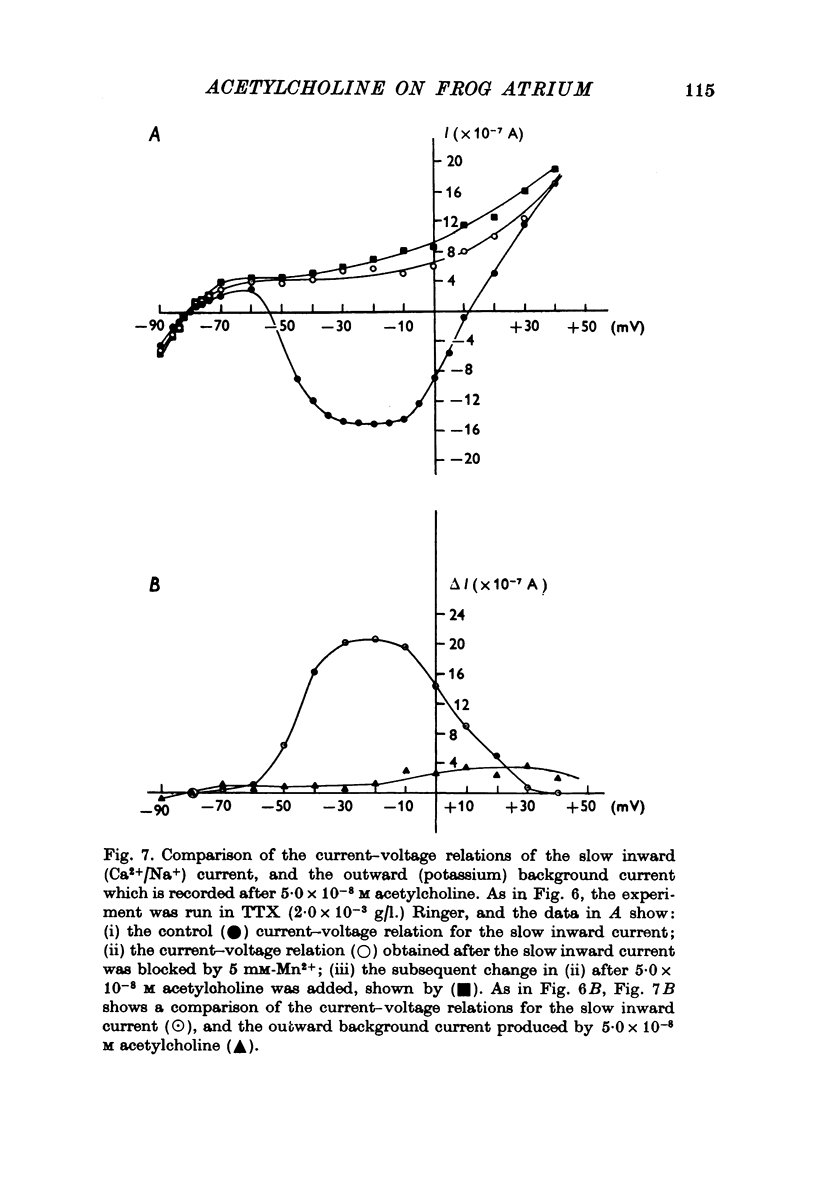
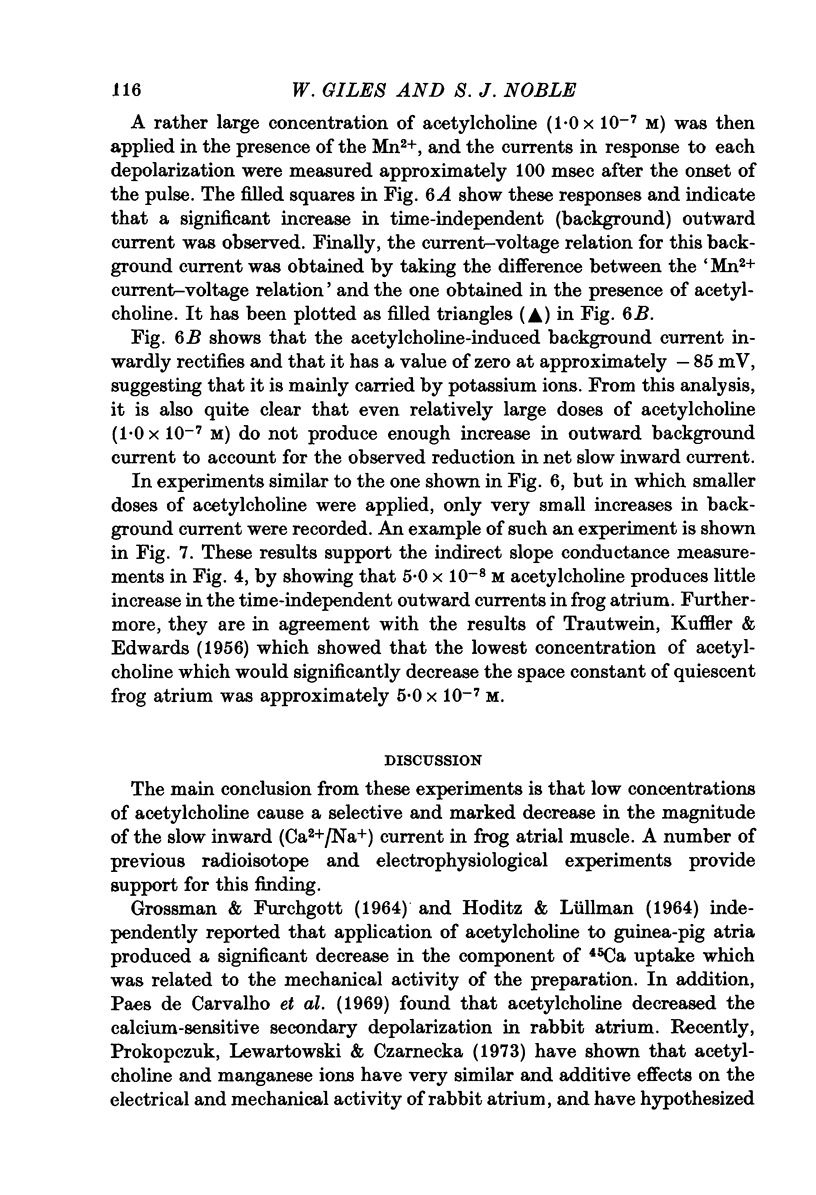
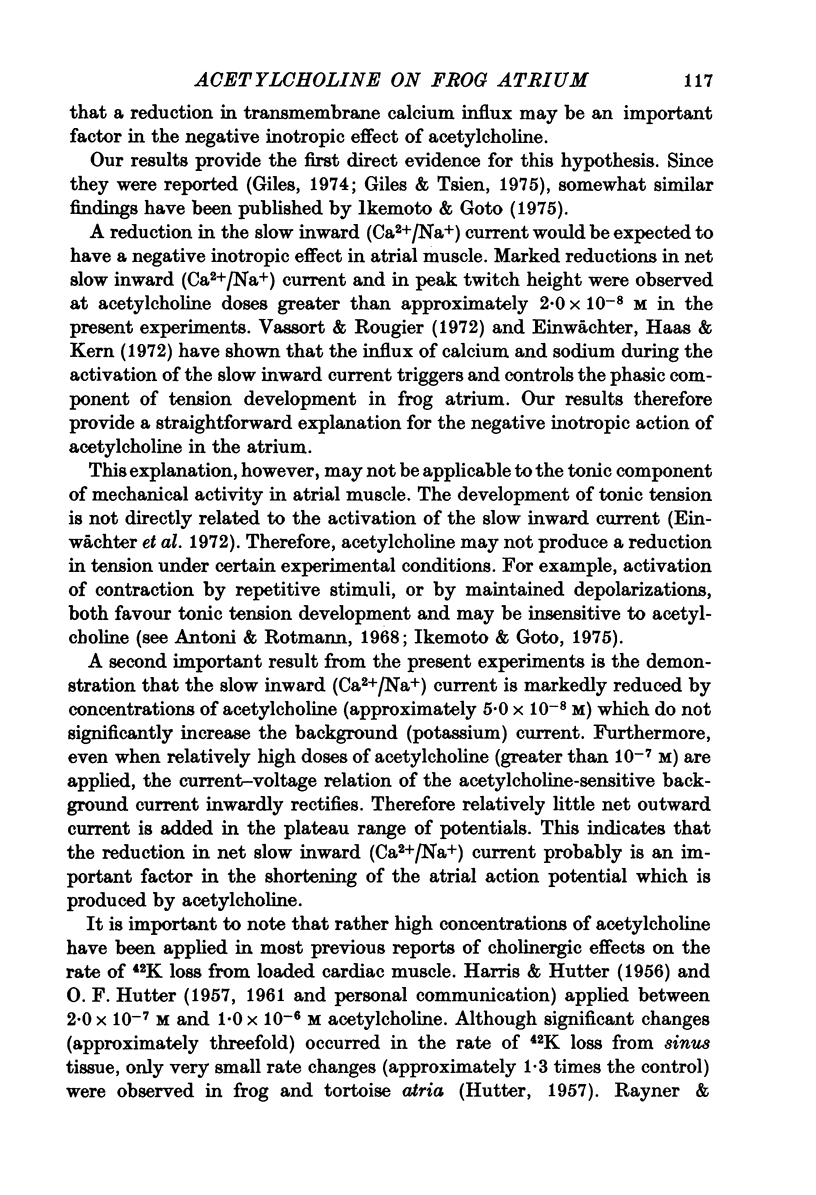
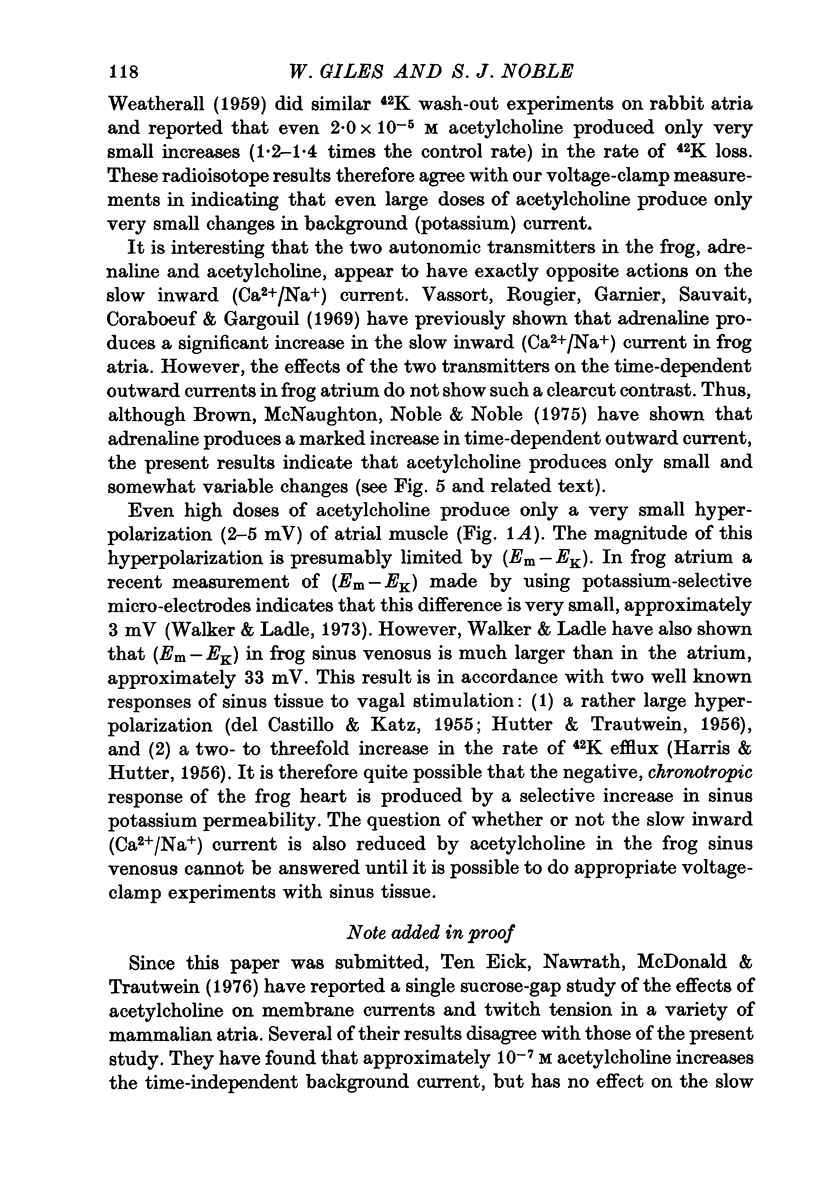
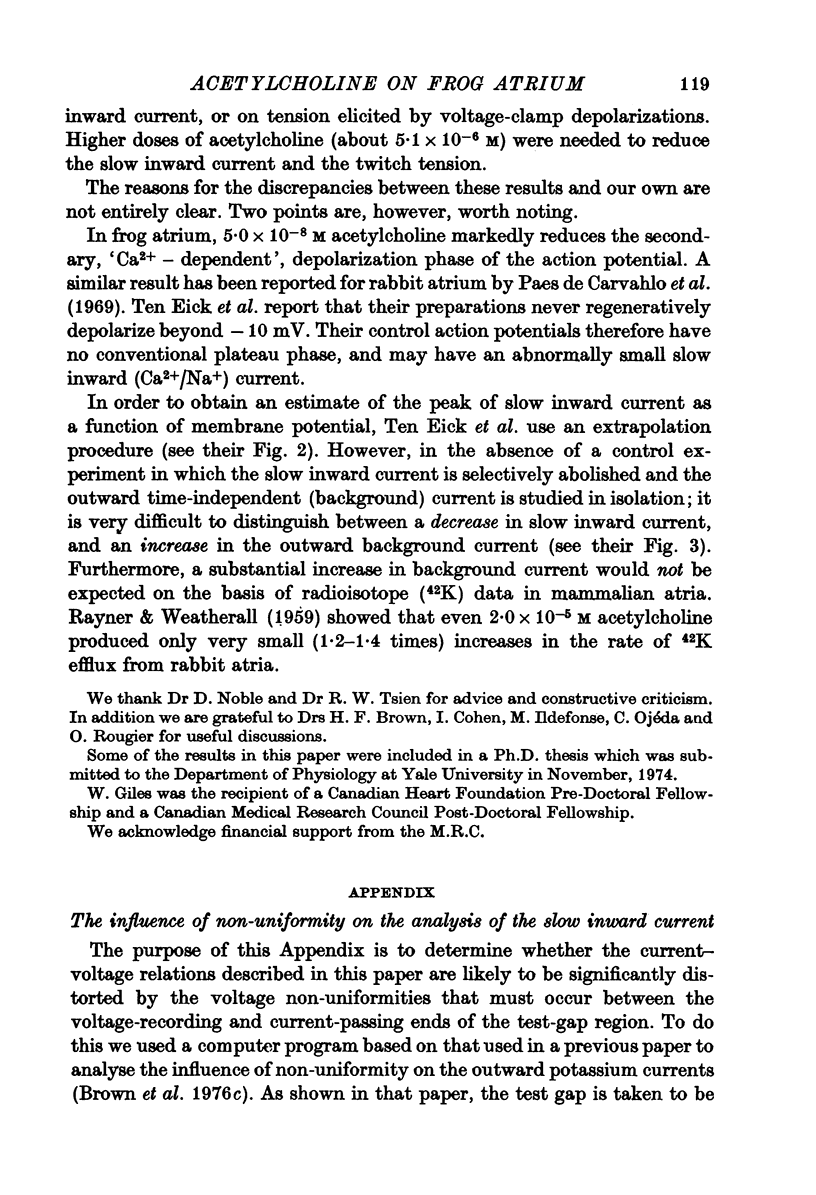
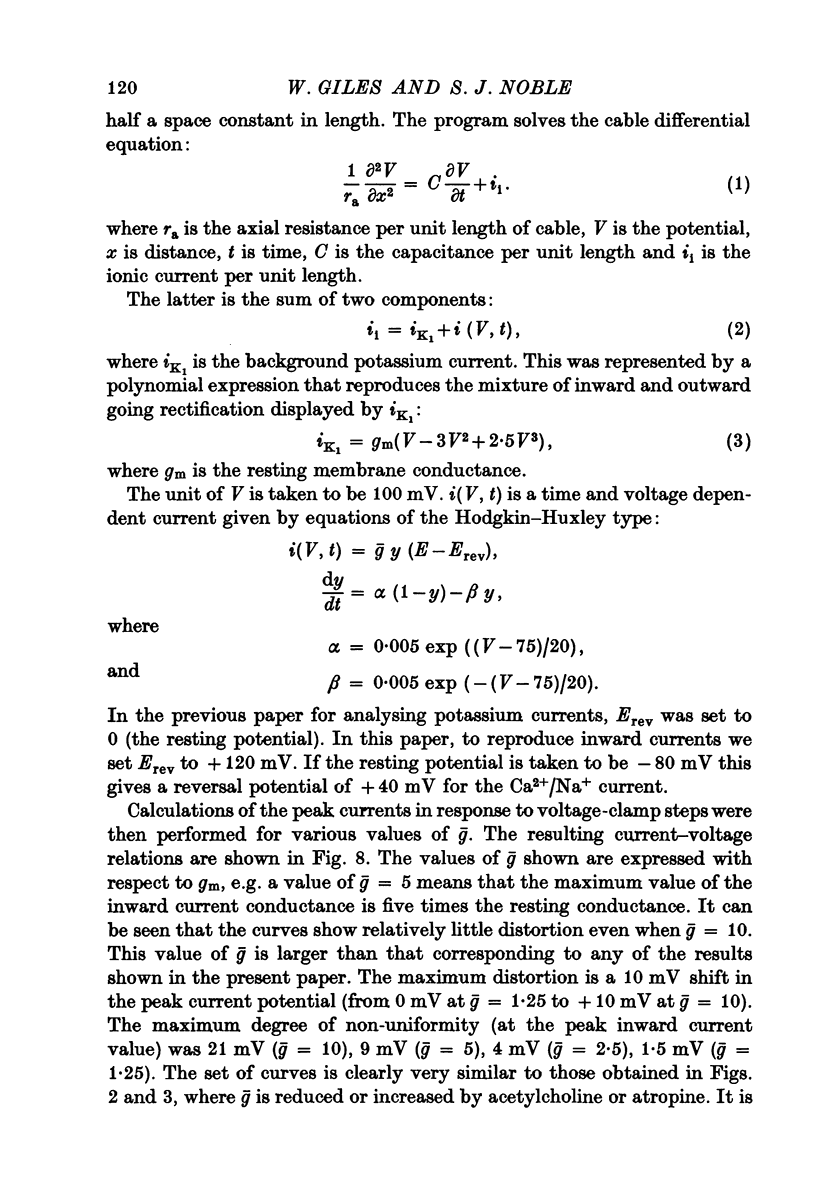
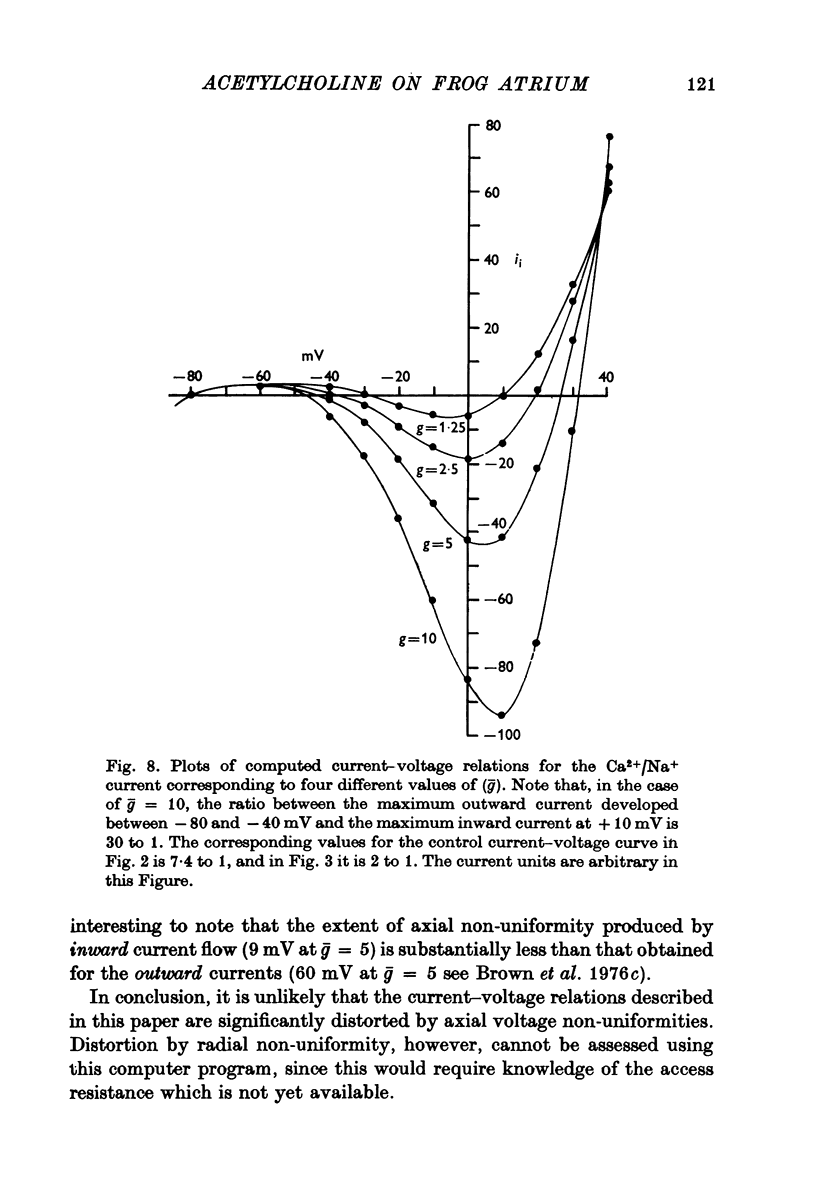
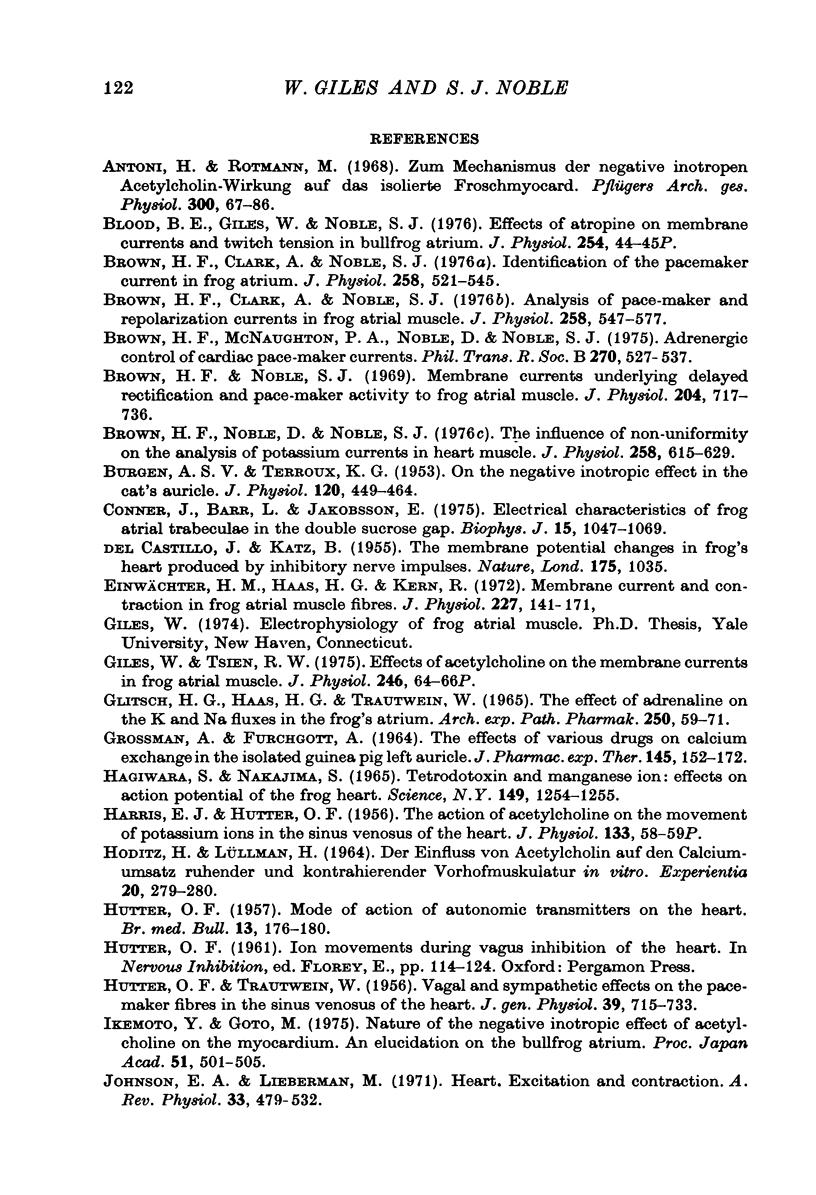
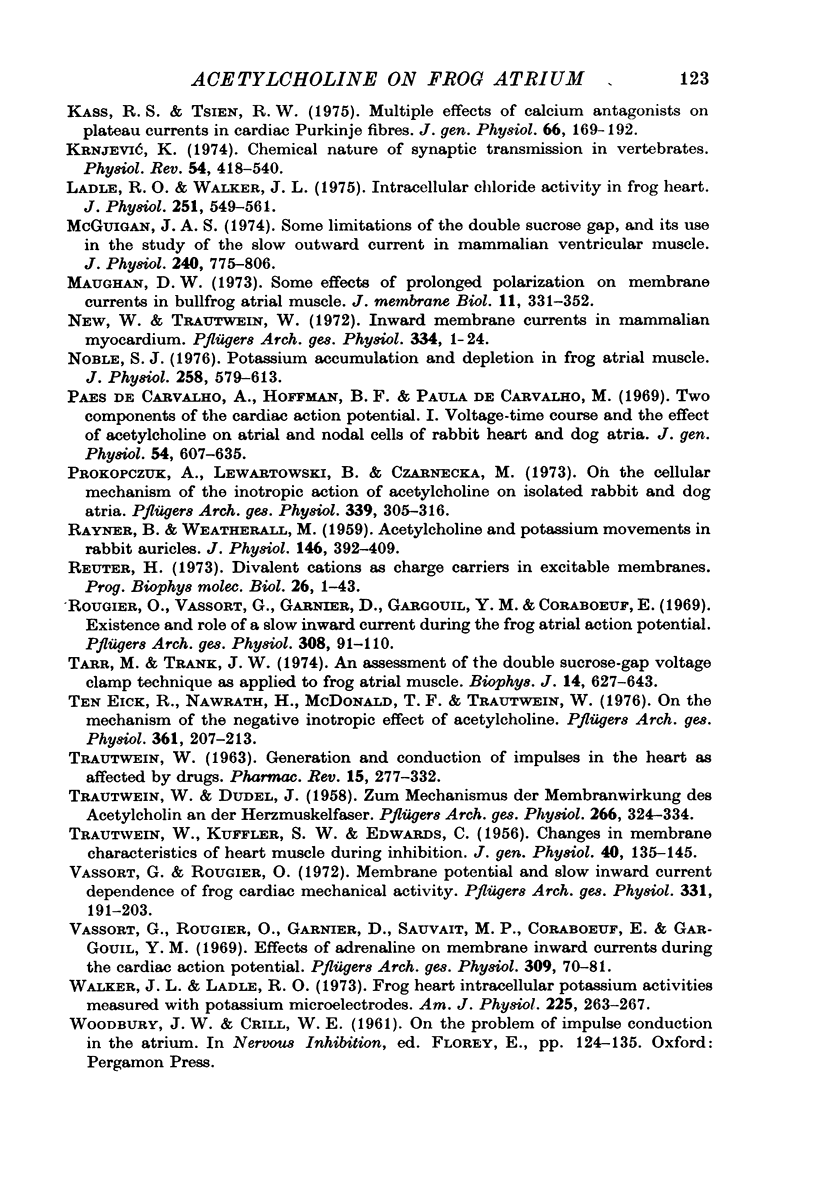
Selected References
These references are in PubMed. This may not be the complete list of references from this article.
- BURGEN A. S., TERROUX K. G. On the negative inotropic effect in the cat's auricle. J Physiol. 1953 Jun 29;120(4):449–464. doi: 10.1113/jphysiol.1953.sp004910. [DOI] [PMC free article] [PubMed] [Google Scholar]
- Blood B. E., Giles W., Noble S. J. Proceedings: Effects of atropine on membrane currents and twitch tension in bullfrog atrium. J Physiol. 1976 Jan;254(1):44P–45P. [PubMed] [Google Scholar]
- Brown H. F., Clark A., Noble S. J. Analysis of pace-maker and repolarization currents in frog atrial muscle. J Physiol. 1976 Jul;258(3):547–577. doi: 10.1113/jphysiol.1976.sp011435. [DOI] [PMC free article] [PubMed] [Google Scholar]
- Brown H. F., Clark A., Noble S. J. Identification of the pace-maker current in frog atrium. J Physiol. 1976 Jul;258(3):521–545. doi: 10.1113/jphysiol.1976.sp011434. [DOI] [PMC free article] [PubMed] [Google Scholar]
- Brown H. F., McNaughton P. A., Noble D., Noble S. J. Adrenergic control of cardian pacemaker currents. Philos Trans R Soc Lond B Biol Sci. 1975 Jun 10;270(908):527–537. doi: 10.1098/rstb.1975.0029. [DOI] [PubMed] [Google Scholar]
- Brown H. F., Noble D., Noble S. J. The influence of non-uniformity on the analysis of potassium currents in heart muscle. J Physiol. 1976 Jul;258(3):615–629. doi: 10.1113/jphysiol.1976.sp011437. [DOI] [PMC free article] [PubMed] [Google Scholar]
- Brown H. F., Noble S. J. Membrane currents underlying delayed rectification and pace-maker activity in frog atrial muscle. J Physiol. 1969 Oct;204(3):717–736. doi: 10.1113/jphysiol.1969.sp008940. [DOI] [PMC free article] [PubMed] [Google Scholar]
- Connor J., Barr L., Jakobsson E. Electrical characteristics of frog atrial trabeculae in the double sucrose gap. Biophys J. 1975 Oct;15(10):1047–1067. doi: 10.1016/S0006-3495(75)85882-6. [DOI] [PMC free article] [PubMed] [Google Scholar]
- DEL CASTILLO J., KATZ B. Production of membrane potential changes in the frog's heart by inhibitory nerve impulses. Nature. 1955 Jun 11;175(4467):1035–1035. doi: 10.1038/1751035a0. [DOI] [PubMed] [Google Scholar]
- EDWARDS C., KUFFLER S. W., TRAUTWEIN W. Changes in membrane characteristics of heart muscle during inhibition. J Gen Physiol. 1956 Sep 20;40(1):135–145. doi: 10.1085/jgp.40.1.135. [DOI] [PMC free article] [PubMed] [Google Scholar]
- Einwächter H. M., Haas H. G., Kern R. Membrane current and contraction in frog atrial fibres. J Physiol. 1972 Dec;227(1):141–171. doi: 10.1113/jphysiol.1972.sp010024. [DOI] [PMC free article] [PubMed] [Google Scholar]
- GLITSCH H. G., HAAS H. G., TRAUTWEIN W. THE EFFECT OF ADRENALINE ON THE K AND NA FLUXES IN THE FROG'S ATRIUM. Naunyn Schmiedebergs Arch Exp Pathol Pharmakol. 1965 Feb 2;250:59–71. doi: 10.1007/BF00246883. [DOI] [PubMed] [Google Scholar]
- GROSSMAN A., FURCHGOTT R. F. THE EFFECTS OF VARIOUS DRUGS ON CALCIUM EXCHANGE IN THE ISOLATED GUINEA-PIG LEFT AURICLE. J Pharmacol Exp Ther. 1964 Aug;145:162–172. [PubMed] [Google Scholar]
- Giles W., Tsien R. W. Effects of acetylcholine on membrane currents in frog artrial muscle. J Physiol. 1975 Mar;246(2):64P–66P. [PubMed] [Google Scholar]
- HUTTER O. F. Mode of action of autonomic transmitters on the heart. Br Med Bull. 1957 Sep;13(3):176–180. doi: 10.1093/oxfordjournals.bmb.a069609. [DOI] [PubMed] [Google Scholar]
- HUTTER O. F., TRAUTWEIN W. Vagal and sympathetic effects on the pacemaker fibers in the sinus venosus of the heart. J Gen Physiol. 1956 May 20;39(5):715–733. doi: 10.1085/jgp.39.5.715. [DOI] [PMC free article] [PubMed] [Google Scholar]
- Hagiwara S., Nakajima S. Tetrodotoxin and manganese ion: effects on action potential of the frog heart. Science. 1965 Sep 10;149(3689):1254–1255. doi: 10.1126/science.149.3689.1254. [DOI] [PubMed] [Google Scholar]
- Hoditz H., Lüllmann H. Der Einfluss von Acetylcholin auf den Calciumumsatz ruhender und kontrahierender Vorhofmuskulatur in vitro. Experientia. 1964 May 15;20(5):279–280. doi: 10.1007/BF02151808. [DOI] [PubMed] [Google Scholar]
- Johnson E. A., Lieberman M. Heart: excitation and contraction. Annu Rev Physiol. 1971;33:479–532. doi: 10.1146/annurev.ph.33.030171.002403. [DOI] [PubMed] [Google Scholar]
- Kass R. S., Tsien R. W. Multiple effects of calcium antagonists on plateau currents in cardiac Purkinje fibers. J Gen Physiol. 1975 Aug;66(2):169–192. doi: 10.1085/jgp.66.2.169. [DOI] [PMC free article] [PubMed] [Google Scholar]
- Ladle R. O., Walker J. L. Intracellular chloride activity in frog heart. J Physiol. 1975 Oct;251(2):549–559. doi: 10.1113/jphysiol.1975.sp011107. [DOI] [PMC free article] [PubMed] [Google Scholar]
- Maughan D. W. Some effects of prolonged polarization on membrane currents in bullfrog atrial muscle. J Membr Biol. 1973;11(4):331–352. doi: 10.1007/BF01869829. [DOI] [PubMed] [Google Scholar]
- McGuigan J. A. Some limitations of the double sucrose gap, and its use in a study of the slow outward current in mammalian ventricular muscle. J Physiol. 1974 Aug;240(3):775–806. doi: 10.1113/jphysiol.1974.sp010634. [DOI] [PMC free article] [PubMed] [Google Scholar]
- New W., Trautwein W. Inward membrane currents in mammalian myocardium. Pflugers Arch. 1972;334(1):1–23. doi: 10.1007/BF00585997. [DOI] [PubMed] [Google Scholar]
- Noble S. J. Potassium accumulation and depletion in frog atrial muscle. J Physiol. 1976 Jul;258(3):579–613. doi: 10.1113/jphysiol.1976.sp011436. [DOI] [PMC free article] [PubMed] [Google Scholar]
- Prokopczuk A., Lewartowski B., Czarnecka M. On the cellular mechanism of the inotropic action of acetylcholine on isolated rabbit and dog atria. Pflugers Arch. 1973;339(4):305–316. doi: 10.1007/BF00594166. [DOI] [PubMed] [Google Scholar]
- RAYNER B., WEATHERALL M. Acetylcholine and potassium movements in rabbit auricles. J Physiol. 1959 May 19;146(2):392–409. doi: 10.1113/jphysiol.1959.sp006200. [DOI] [PMC free article] [PubMed] [Google Scholar]
- Reuter H. Divalent cations as charge carriers in excitable membranes. Prog Biophys Mol Biol. 1973;26:1–43. doi: 10.1016/0079-6107(73)90016-3. [DOI] [PubMed] [Google Scholar]
- Rougier O., Vassort G., Garnier D., Gargouil Y. M., Coraboeuf E. Existence and role of a slow inward current during the frog atrial action potential. Pflugers Arch. 1969;308(2):91–110. doi: 10.1007/BF00587018. [DOI] [PubMed] [Google Scholar]
- TRAUTWEIN W., DUDEL J. Zum Mechanismus der Membranwirkung des Acetylcholin an der Herzmuskelfaser. Pflugers Arch. 1958;266(3):324–334. doi: 10.1007/BF00416781. [DOI] [PubMed] [Google Scholar]
- TRAUTWEIN W. Generation and conduction of impulses in the heart as affected by drugs. Pharmacol Rev. 1963 Jun;15:277–332. [PubMed] [Google Scholar]
- Tarr M., Trank J. W. An assessment of the double sucrose-gap voltage clamp technique as applied to frog atrial muscle. Biophys J. 1974 Sep;14(9):627–643. doi: 10.1016/S0006-3495(74)85940-0. [DOI] [PMC free article] [PubMed] [Google Scholar]
- Ten Eick R., Nawrath H., McDonald T. F., Trautwein W. On the mechanism of the negative inotropic effect of acetylcholine. Pflugers Arch. 1976 Feb 24;361(3):207–213. doi: 10.1007/BF00587284. [DOI] [PubMed] [Google Scholar]
- Vassort G., Rougier O. Membrane potential and slow inward current dependence of frog cardiac mechanical activity. Pflugers Arch. 1972;331(3):191–203. doi: 10.1007/BF00589126. [DOI] [PubMed] [Google Scholar]
- Walker J. L., Ladle R. O. Frog heart intracellular potassium activities measured with potassium microelectrodes. Am J Physiol. 1973 Jul;225(1):263–267. doi: 10.1152/ajplegacy.1973.225.1.263. [DOI] [PubMed] [Google Scholar]
- de Carvalho A. P., Hoffman B. F., de Carvalho M. P. Two components of the cardiac action potential. I. Voltage-time course and the effect of acetylcholine on atrial and nodal cells of the rabbit heart. J Gen Physiol. 1969 Nov;54(5):607–635. doi: 10.1085/jgp.54.5.607. [DOI] [PMC free article] [PubMed] [Google Scholar]


